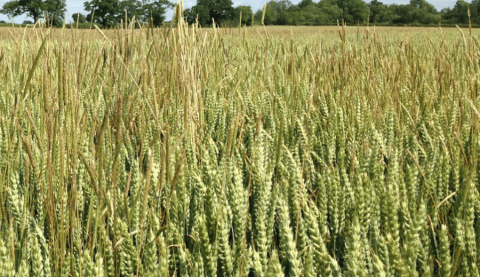Over the last 60 years, 41 different active ingredients have been introduced to help control black-grass and the weed has evolved resistance to at least 33 of them. Multiple herbicide resistance is known to be widespread, but this usually manifests as reduced herbicide efficacy and more variable control more so than complete herbicide failure.
When the first case of black-grass resistance to chlortoluron was discovered back in 1986 by scientists from ADAS and Rothamsted, a simple test for confirming herbicide resistance was developed. Since then, 3,758 blackgrass seed samples have been submitted for herbicide resistance testing by farmers looking to assess the extent of resistance to particular herbicides in their own fields. The data from these routine tests has now been collated to quantify long-term trends of herbicide resistance countrywide.
Dr Sarah Cook, ADAS Weed Research Consultant and lead author of the paper explained:
“These simple resistance tests are more than ‘one-off’ pictures of resistance within a field for the benefit of one particular farmer. When you compile the data from all the blackgrass samples submitted to ADAS for herbicide resistance testing over 35 years, it can provide a lot of relevant information on the wider distribution, evolution, and impact of resistance on farming.”
The current resistance status of common herbicides
The six herbicides primarily used in resistance testing include chlortoluron, fenoxaprop, pendimethalin, sethoxydim, cycloxydim and mesosulfuron + iodosulfuron, although testing can be done against up to 19 different herbicides.
Chlortoluron
Since resistance was first found in 1986, testing with chlortoluron continued until 2013. There has been a progressive decline in efficacy of this herbicide by 19% or 0.69% every year.
Fenoxaprop
Testing for fenoxaprop resistance began in 1990, the year it was first commercially available. In the first-year, resistance to this herbicide was already present in black-grass populations and the loss of efficacy has continued at a rate of 1.36% per year. By 2006, 90% of black-grass tested was fenoxaprop resistant.
Pendimethalin
Pendimethalin has always been a widely used component of pre-emergence herbicide mixtures. Testing using this herbicide began in 1997 and continues today. Initial tests showed 91% control of black-grass but low to moderate levels of resistance was already present in 36% of populations. There has been an overall decline in efficacy to this herbicide of 25%, equating to an annual loss in efficacy of 1.1% per year.
Sethoxydim and cycloxydim
The group 1 herbicides sethoxydim and cycloxydim were first tested for in 1997 and showed a high level of efficacy (85%) in black-grass. Testing with cycloxydim has continued to date and the annual decline in efficacy has been 1.92% per year, equivalent to a total reduction in efficacy of 44% over 23 years. In 2020, the proportion of black-grass populations tested as highly resistant to cycloxydim was 82%.
Mesosulfuron + iodosulfuron
Mesosulfuron + iodosulfuron was introduced to the market in 2003 and samples tested the year previously were all sensitive to this herbicide. Over the subsequent 18 years, the annual decline in efficacy has been 3.73%, the most rapid decline in all herbicides tested. The percentage of samples rated as resistant increased rapidly from zero in 2001/02 to 63% in 2011/12 and 90% by 2019/20. The proportion of tested black-grass sensitive to this herbicide rapidly decreased and stood at only 8% in 2020.
In summary, there has been much less evolution of resistance to pendimethalin and its use has remained relatively constant. In contrast, use of mesosulfuron + iodosulfuron, fenoxaprop and cycloxydim has declined substantially, coinciding with widespread and rapidly increasing resistance.
The importance of routine herbicide resistance testing
For researchers, routine monitoring of herbicide resistance test results has led to the development of robust standardised testing methods, allowing them to detect growing resistance at an individual field level as well country-wide level. Monitoring herbicide resistance test results and ensuring they are standardised has the potential to replace, at least in part, random nationwide surveys to assess the resistance threat.
Sarah adds that for farmers, consistent testing for resistance is vital for accurately assessing current resistance threat at farm level and for catching problems quickly. Equally vital is that farmers have ready access to reliable herbicide resistance testing to accurately monitor annual results.
Sarah concluded:
“Ensuring herbicide resistance tests are reliable and easily accessible is absolutely crucial to persuade farmers to move towards integrated weed management techniques and away from relying on active controls alone for the management of black-grass. The creep of herbicide resistance is constant, it’s only a matter a time before we lose the dwindling actives we have left and only through routine monitoring and careful management can we hope to slow down the clock.”
The full paper can be accessed here.
Dr. Sarah Cook is a research scientist with over 30 years experience in weed control. She wrote the AHDB guide to controlling arable weeds in the rotation and the Oilseed Rape Guide. Sarah has also authored several influential international papers on weeds and herbicide resistance. Contact Sarah at weeds@adas.co.uk or find out more about our herbicide resistance testing service, visit our service webpage.





